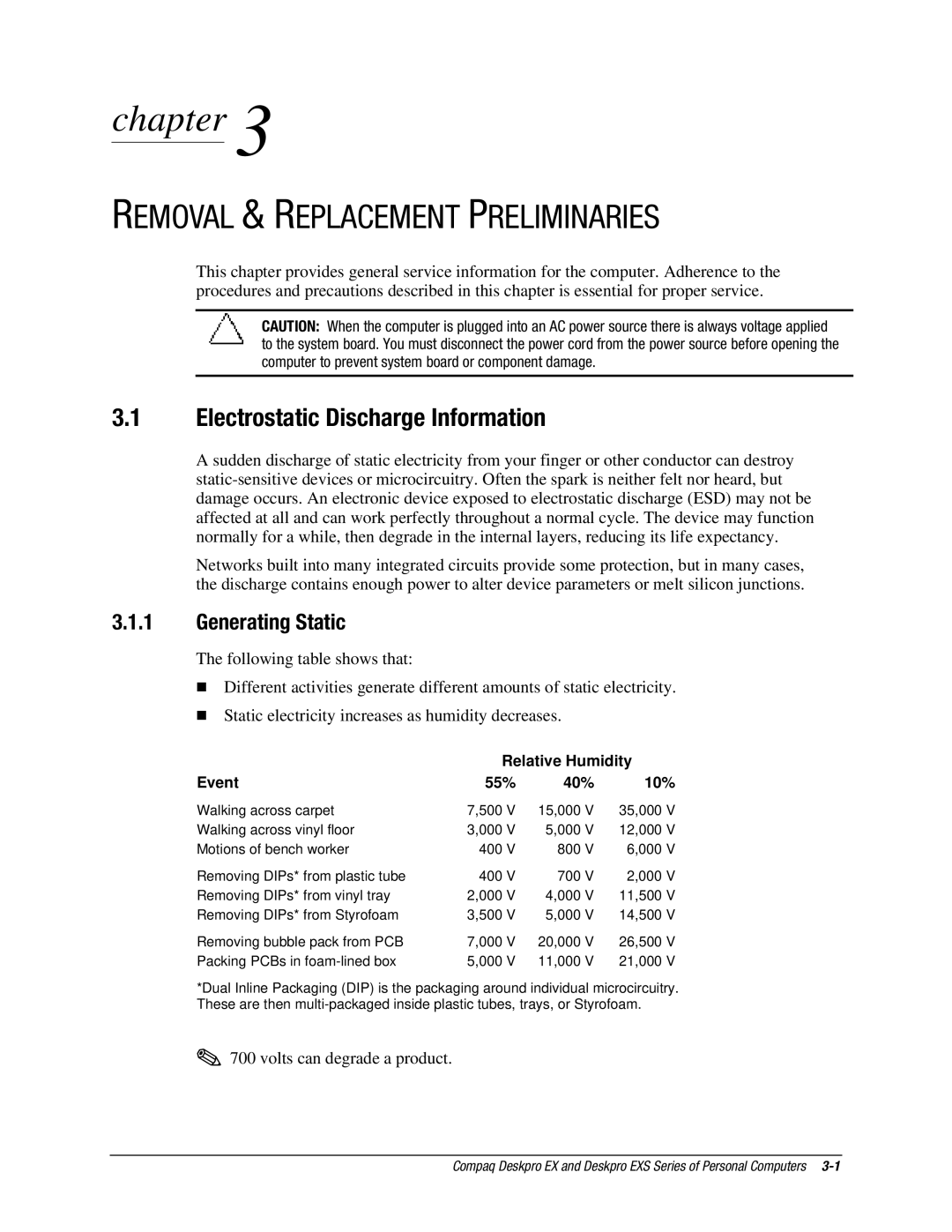
chapter 3
REMOVAL & REPLACEMENT PRELIMINARIES
This chapter provides general service information for the computer. Adherence to the procedures and precautions described in this chapter is essential for proper service.
CAUTION: When the computer is plugged into an AC power source there is always voltage applied to the system board. You must disconnect the power cord from the power source before opening the computer to prevent system board or component damage.
3.1Electrostatic Discharge Information
A sudden discharge of static electricity from your finger or other conductor can destroy
Networks built into many integrated circuits provide some protection, but in many cases, the discharge contains enough power to alter device parameters or melt silicon junctions.
3.1.1Generating Static
The following table shows that:
!Different activities generate different amounts of static electricity.
!Static electricity increases as humidity decreases.
| Relative Humidity |
| ||||
Event | 55% | 40% | 10% | |||
Walking across carpet | 7,500 | V | 15,000 | V | 35,000 | V |
Walking across vinyl floor | 3,000 | V | 5,000 | V | 12,000 | V |
Motions of bench worker | 400 | V | 800 | V | 6,000 | V |
Removing DIPs* from plastic tube | 400 | V | 700 | V | 2,000 | V |
Removing DIPs* from vinyl tray | 2,000 | V | 4,000 | V | 11,500 | V |
Removing DIPs* from Styrofoam | 3,500 | V | 5,000 | V | 14,500 | V |
Removing bubble pack from PCB | 7,000 | V | 20,000 | V | 26,500 | V |
Packing PCBs in | 5,000 | V | 11,000 | V | 21,000 | V |
*Dual Inline Packaging (DIP) is the packaging around individual microcircuitry. These are then
✎700 volts can degrade a product.
Compaq Deskpro EX and Deskpro EXS Series of Personal Computers
